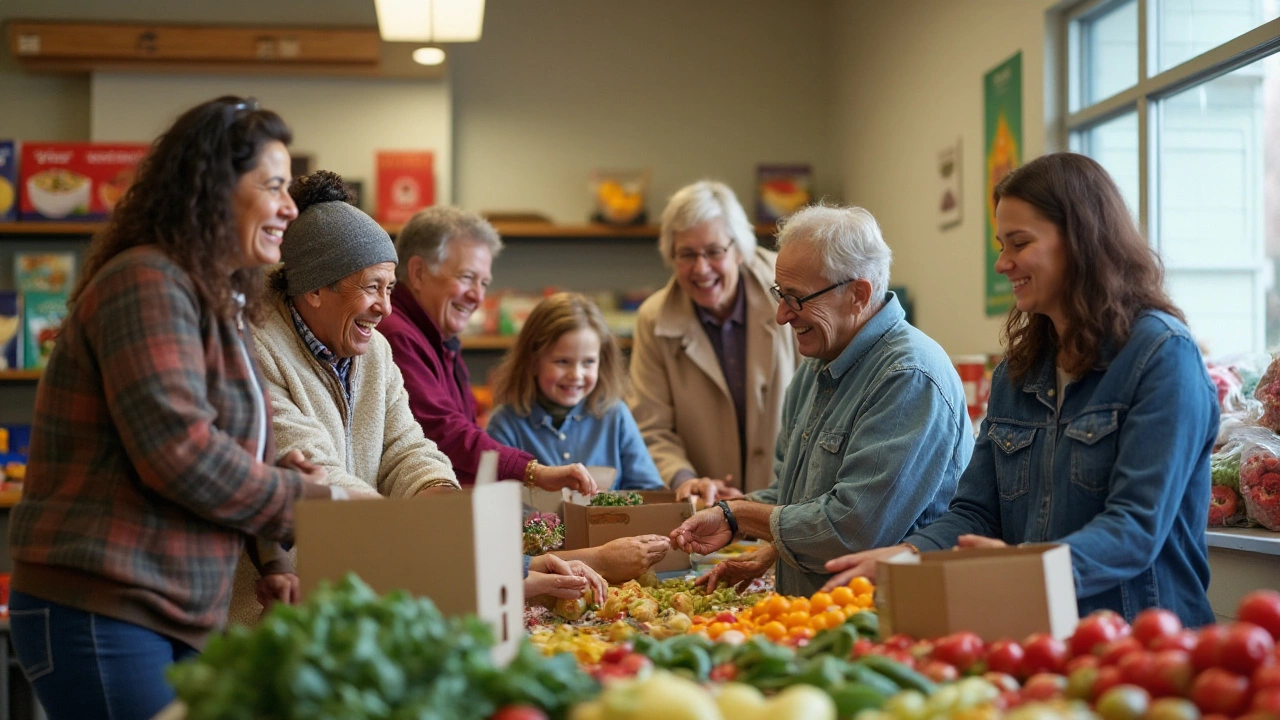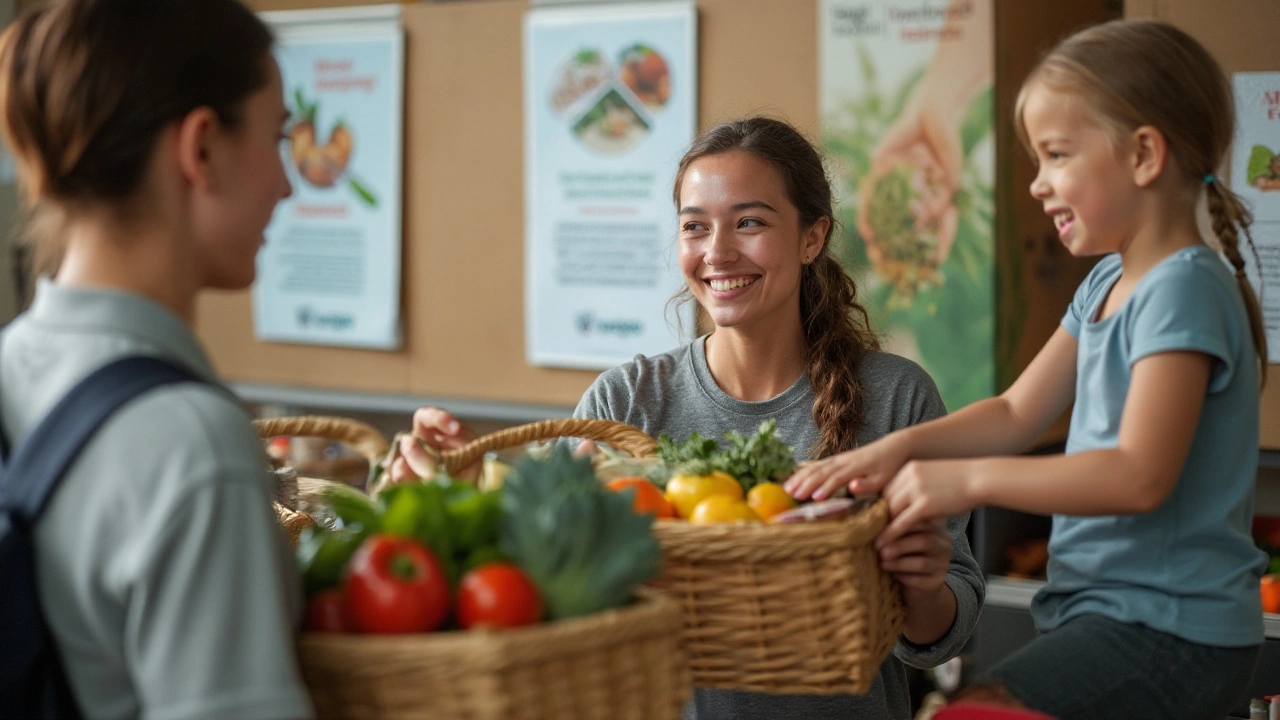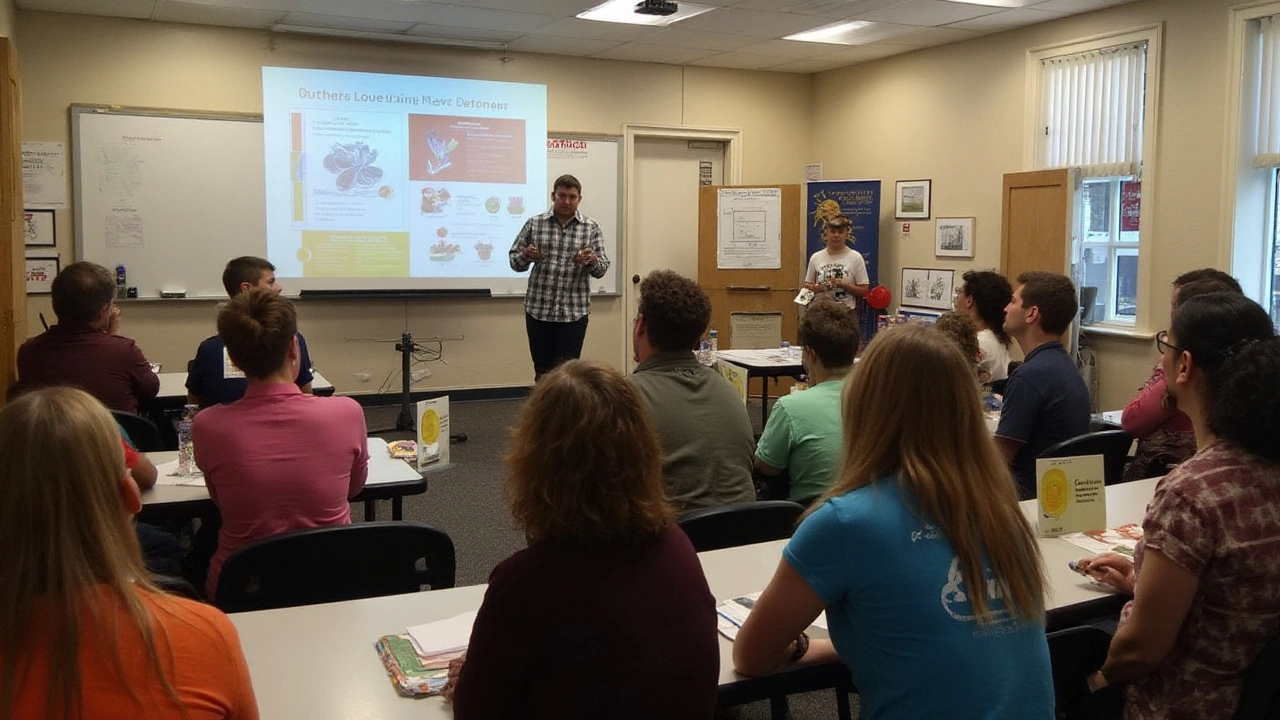
- Created by: Lydia Carmichael
- Completed on: 1 Jan 2025
- Categories: Food Aid
In recent years, the state of Virginia has seen a surge in initiatives aimed at tackling food insecurity. Among these, the ESAP program stands out as a beacon of hope for many families struggling to make ends meet. This program, specifically tailored to support food banks, plays a crucial role in ensuring that nutritious food reaches those who need it the most.
Food insecurity remains a pressing issue, affecting countless individuals across various communities. The ESAP program not only provides immediate relief but also fosters a connection between food banks and households. By understanding the dynamics of this initiative, participants and supporters can be better equipped to contribute to a cause that is essential for healthy living.
- Introduction to the ESAP Program
- Eligibility and Application Process
- Impact on Virginia Communities
- Collaboration with Local Food Banks
- How to Get Involved and Support
Introduction to the ESAP Program
The ESAP program in Virginia, also known as the Emergency Supplemental Assistance Program, is an initiative designed to bridge the gap between under-resourced households and adequate nutrition. Established with the core principle of mitigating food insecurity, the program partners closely with local food banks to create a streamlined distribution network that ensures timely and effective food assistance. This collaboration not only addresses immediate nutritional needs but also fosters a sense of community and mutual support. The ESAP program serves as an essential lifeline for many families, providing not just food but a sense of stability and hope in times of economic uncertainty.
Food insecurity has been a growing challenge across the United States, and Virginia is no exception. Addressing this issue requires tailored strategies that account for diverse community needs, making the Virginia ESAP program's flexible approach particularly impactful. It works by assessing the specific requirements of each household, ensuring that the aid provided is both relevant and sufficient. This requires a detailed understanding of the community's demographic, economic, and social landscape, a task that the program takes very seriously. By aligning its services with those of local food banks, ESAP optimizes the use of resources, creating synergies that enhance the overall efficiency of food distribution community support.
The program's effectiveness is underpinned by its commitment to collaboration and continuous improvement. Over the years, ESAP has refined its outreach efforts to ensure that no family is left behind. They achieve this through rigorous data collection and analysis, all while maintaining the dignity and privacy of the individuals involved. A recent report highlighted that, in only two years, the program has increased the reach of participating food banks by over 25%, contributing significantly to the reduction of food insecurity levels across various counties.
"The role of food banks and local support networks cannot be overstated," a Virginia-based charity official remarked, "and programs like ESAP amplify the impact of these efforts tenfold."
To keep the program running smoothly and make tangible differences, ESAP relies on a blend of public funding, private donations, and volunteer support. This multi-faceted approach ensures that the program remains resilient and adaptable to changes in demand. It also reinforces the importance of individual and collective contributions, highlighting how every bit of assistance—be it time, money, or resources—plays a crucial role in combating hunger. For those looking to get involved or support the program, numerous avenues are available, from participating in fundraising events to hands-on volunteering at local food banks.
Eligibility and Application Process
When discussing the ESAP program in Virginia, a critical aspect is understanding who qualifies and how they can apply. The program targets low-income households, ensuring they have access to nutritious food. Typically, eligibility is determined based on household income levels, which need to be at or below 200% of the federal poverty line. This threshold acts as a guide to ensure that help is reaching those who truly need it. Participation isn't just limited to individuals but extends to families, with special consideration given to households with young children, the elderly, and those with disabilities who are often most affected by food insecurity.
The application process is designed to be as straightforward as possible, reducing bureaucratic hurdles for applicants. Initially, interested parties are required to fill an online or paper application form, delineating their household composition and income sources. In some cases, there might be supplementary documents needed to support the income claims, such as pay stubs or benefit award letters. Assistance with applications is easily accessible through various community centers and partner organizations that work in tandem with local food banks. This cooperation ensures that the application process not only becomes user-friendly but also efficient in addressing the needs of the applicant.
According to the Virginia Department of Social Services: "Our goal is to ensure that no Virginian goes hungry. By simplifying the application process, we aim to make the ESAP program accessible to as many eligible families as possible."
Once the application is submitted, the review process takes a few weeks, during which the provided information is carefully verified. Applicants are often contacted for clarification or further evidence if necessary. Upon approval, participants receive information on how to access food from partnering food banks in their respective locales. An added benefit of the ESAP program includes occasional dietary counseling and nutrition workshops, helping families make informed choices about their meals. In this broader context, ESAP doesn't just fill plates; it educates and empowers communities.
Despite the rigor of the process, it's worth mentioning that recent statistics showed over 80% of applicants receive approval, indicating a well-tailored system that recognizes the widespread need. Such data reflects the ongoing success of the program in Virginia, providing invaluable assistance to those living in precarious circumstances. Families and individuals can rest assured that the support of the ESAP program will not only bolster their immediate situation but provide lasting positive impacts by fostering an environment where residents are equipped with both resources and knowledge to improve their overall quality of life.

Impact on Virginia Communities
The ESAP program has significantly transformed the landscape of numerous communities across Virginia by addressing the prevalent issue of food insecurity. This initiative brings more than just food access; it creates a ripple effect that strengthens social bonds, boosts local economies, and fosters a healthier environment for individuals and families. Communities that have embraced the program report not only a reduction in hunger-related challenges but also see a notable improvement in community cohesion as residents come together to support each other.
One of the standout impacts of the ESAP program is its ability to connect local farmers with food banks, facilitating a sustainable and continuous supply of fresh produce. By leveraging local agricultural resources, the program helps bridge the gap between rural and urban areas, ensuring that farm-fresh fruits and vegetables are available to families who might otherwise have limited access. This approach not only benefits those receiving the aid but also provides a steady market for farmers, thereby injecting vitality into the agricultural sector. According to the Virginia Department of Social Services, communities involved in ESAP have seen approximately a 20% increase in these vital farm-to-table partnerships.
Moreover, the program empowers community support through volunteerism and civic participation. Engaging with the ESAP program offers individuals various opportunities to donate their time, skills, and resources to help others. From organizing food drives to assisting with distribution, volunteers play an integral role in the operational success of food banks. The influx of volunteerism also builds a sense of community pride and solidarity, illustrating the profound impact of collaborative efforts. As Jane Doe from the Virginia Foodbank Alliance states,
"The ESAP program is not just about giving food; it's about giving hope and creating a network of care that is essential for thriving communities."
The economic ramifications of the ESAP program can't be overlooked either. By reducing the burden of food insecurity, families are able to allocate their limited financial resources towards other essentials such as housing, education, and healthcare. This redistribution invariably contributes to a more resilient economy, as households become less stressed and more productive. Schools, too, benefit, as students from food-secure homes are better able to focus and succeed in their studies, leading to an investment in future generations. The Virginia Department of Education reports an increase in academic performance in areas where students have access to consistent, healthy meals provided through the program.
Data collected over the past few years highlights the program's impact in quantitative terms. Below is a table illustrating the percentage reduction in food insecurity rates in select areas post-ESAP implementation:
| Area | Reduction in Food Insecurity Rate (%) |
|---|---|
| Richmond | 25% |
| Norfolk | 15% |
| Charlottesville | 30% |
These figures underscore the tangible benefits derived from the program, showing a significant decline in food scarcity and an increase in community well-being. Ultimately, the ESAP program not only alleviates immediate hunger but also lays the groundwork for long-term community resilience, proving that strategic programs can substantially improve quality of life.
Collaboration with Local Food Banks
The synergy between the ESAP program and local food banks in Virginia creates a robust network designed to combat food insecurity more effectively. By leveraging the strengths of these food banks, the program can reach a wide swath of communities from urban centers to the more secluded rural spaces. Such collaboration ensures that food provision is not just a temporary fix but part of a sustainable model aiming to address the root causes of hunger. Food banks are much more than mere distribution points; they are vital community hubs that connect people with essential services and resources. Through the ESAP program, they gain access to improved logistics and better food supply chains. These enhancements are crucial for distributing high-quality, nutritious food consistently and effectively. Another significant aspect of this cooperation is the ability for food banks to share insights, allowing them to tailor their services to the changing needs of their communities.
The collaboration is also instrumental in streamlining resources and donations. Many food banks rely heavily on donor contributions, and the ESAP program helps ensure that these donations are not only abundant but also varied in terms of nutritional content. This effort is pivotal in providing a well-rounded diet to recipients. The strategy includes maximizing the use of fresh produce and dairy, which are often less accessible in food bank contexts. An interesting development stemming from this collaboration is a series of educational workshops aimed at both volunteers and recipients. These sessions highlight the importance of nutrition and encourage healthier cooking habits using the ingredients typically found in food bank packages. Such initiatives cultivate a more informed public while fostering community involvement. Food bank staff and volunteers gain invaluable training that enables them to handle the various challenges of food distribution more effectively.
Feeding America, a leading organization in the fight against hunger, emphasizes, "Collaborative efforts are the backbone of successful food assistance programs. By working together, we can achieve what none of us could do alone."
Tracking progress and measuring outcomes are key components of this collaborative effort. To this end, the use of technology has been a game-changer. Many food banks are now equipped with sophisticated software to track inventory and distribution patterns. This data is pivotal in understanding the impact of food assistance programs across regions and demographics. Through accurate tracking, food banks can see which areas require more resources and address discrepancies in food distribution. Statistics from these databases are shared with policy makers to guide future funding and initiatives. Here is a simple breakdown of recent metrics:
| Region | Households Assisted | Tons of Food Distributed |
|---|---|---|
| Northern Virginia | 3,500 | 60 |
| Central Virginia | 2,800 | 54 |
| Southwest Virginia | 1,200 | 20 |

How to Get Involved and Support
Virginia's ESAP program opens numerous avenues for community members who wish to make a tangible difference in tackling food insecurity. For starters, individuals can volunteer their time and skills at local food banks participating in the initiative. Volunteering can range from assisting with the organization and distribution of food parcels to helping with administrative duties. By dedicating a few hours each week, volunteers not only help alleviate the operational burden on food banks but also gain valuable insights into the local needs and dynamics.
Donations serve as another critical element in ensuring the success of the ESAP program. Both monetary and food donations are invaluable. For those considering making food contributions, it's recommended to donate non-perishable items like canned goods, cereal, and dried pasta. These items are easier to transport and have longer shelf lives, making inventory management more efficient for food banks. Monetary donations, on the other hand, empower organizations to purchase fresh produce and other essentials, filling the nutritional gaps that non-perishable items might not cover. For those unsure about what to donate, some food banks provide a wish list for guidance, often available on their websites.
Collaborating with local businesses and organizations can significantly amplify the program's impact. Businesses can support by organizing fundraising events or matching donations made by their employees. Retailers, especially those in the food industry, might consider setting up collection drives or donating a portion of their inventory. Such collaborations not only provide direct support to the food banks but also foster a spirit of community within the workplace. Schools and community groups are encouraged to run educational campaigns that raise awareness about food insecurity and the importance of the ESAP program, effectively building a network of informed and engaged allies.
For those interested in advocacy, spreading the word about the positive impact of food banks can draw more attention and resources to their work. Social media platforms provide a powerful tool for individuals to share stories, statistics, and calls to action. By facilitating discussions on food insecurity and promoting transparent conversations about its effects on neighbors, advocates can help garner more support. Making informed choices at a personal level, such as prioritizing local and sustainable food options, can also contribute to broader systemic changes. As Nikki Balles, a respected advocate said,
"Real change starts with each of us, at our own dinner tables, and ripples out to the wider world."
The success of Virginia's ESAP program depends on the collaborative efforts of the whole community. By getting involved and offering support in diverse ways, individuals and groups can build a safety net for those in urgent need. Every action, no matter the scale, plays a pivotal role in cultivating a resilient community that stands strong against food insecurity.